Maternal Obesity and Autism's Connection

Understanding the Rising Concern of Maternal Obesity in Neurodevelopmental Outcomes
As global rates of obesity continue to climb, researchers have intensified efforts to understand how maternal health influences child neurodevelopment. A growing body of scientific evidence suggests that maternal obesity, particularly preconception and during pregnancy, significantly elevates the risk of autism spectrum disorder (ASD) in offspring. This article explores the latest research findings, biological mechanisms, and the complex interplay of genetic and environmental factors that underpin this association, aiming to clarify current debates and outline potential preventative strategies.
Epidemiological Evidence Linking Maternal Obesity and Autism
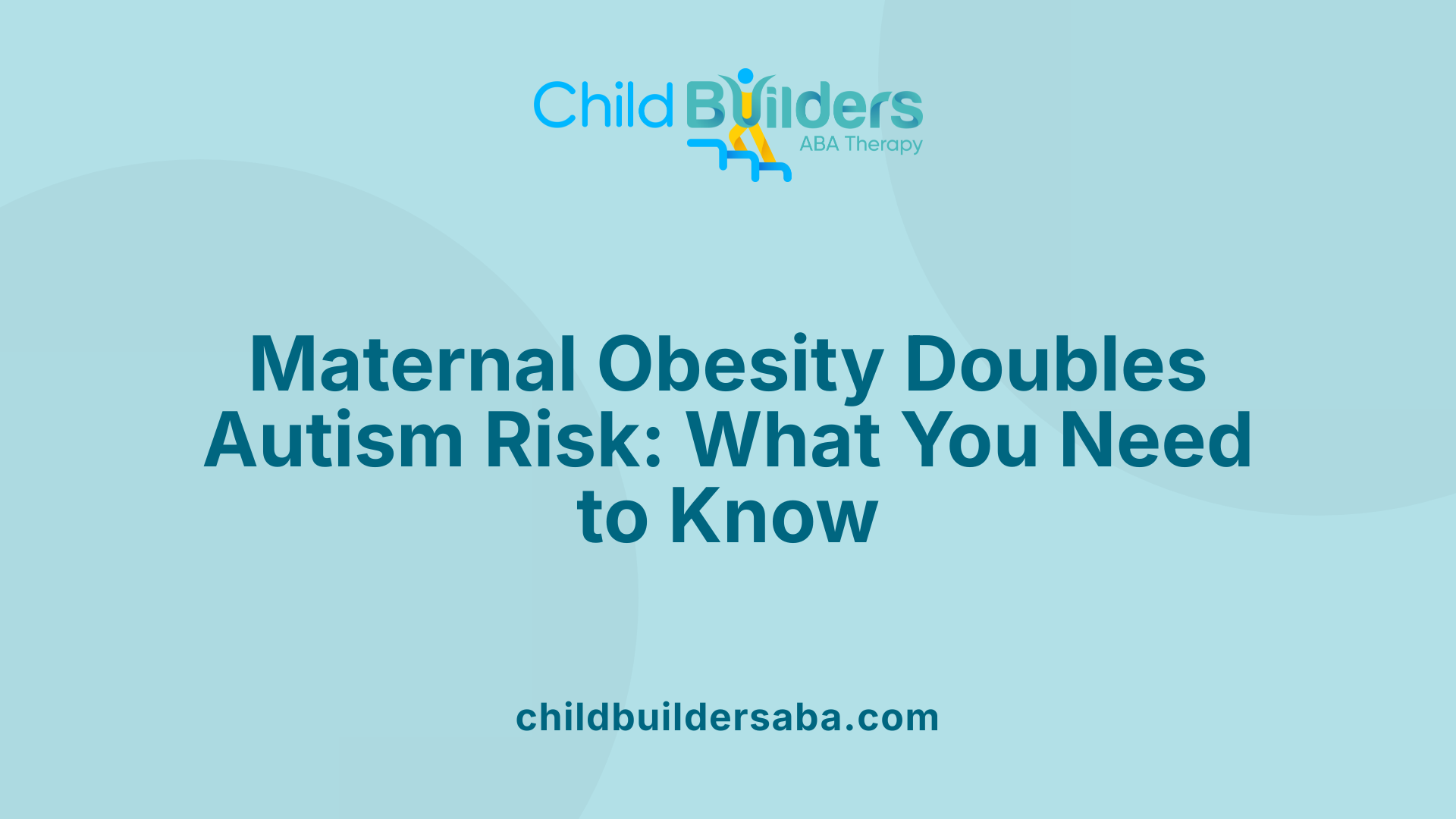
Do maternal obesity increase the risk of autism spectrum disorder (ASD)?
Research from extensive studies highlights a significant connection between maternal obesity and the likelihood of autism in offspring. A comprehensive meta-analysis including over 3.6 million mother-child pairs found that women who were obese before or during pregnancy faced notably higher risks of having a child diagnosed with ASD. Specifically, maternal obesity was associated with roughly twice the chance of autism, with an adjusted risk increase of about 2.23 times.
This heightened risk extends beyond autism alone. Pre-pregnancy overweight and obesity have also been linked to increased odds of related neurodevelopmental and behavioral conditions, such as attention deficit hyperactivity disorder (ADHD), conduct disorder, and externalizing symptoms that affect peer relationships.
The mechanisms behind these associations seem to involve a complex mix of biological factors. Excess maternal adiposity is linked to increased systemic inflammation, hormonal imbalances, and metabolic disturbances during pregnancy. These conditions may influence fetal brain development, potentially leading to neurodevelopmental disorders.
The evidence underscores the importance of managing weight proactively before conception and maintaining healthy weight levels during pregnancy. Efforts aimed at optimizing maternal health could play a vital role in reducing ASD risk and supporting better neurodevelopmental outcomes in children. Protecting future generations may depend on addressing maternal obesity as a modifiable risk factor for autism.
Biological and Mechanistic Insights into Maternal Obesity's Impact
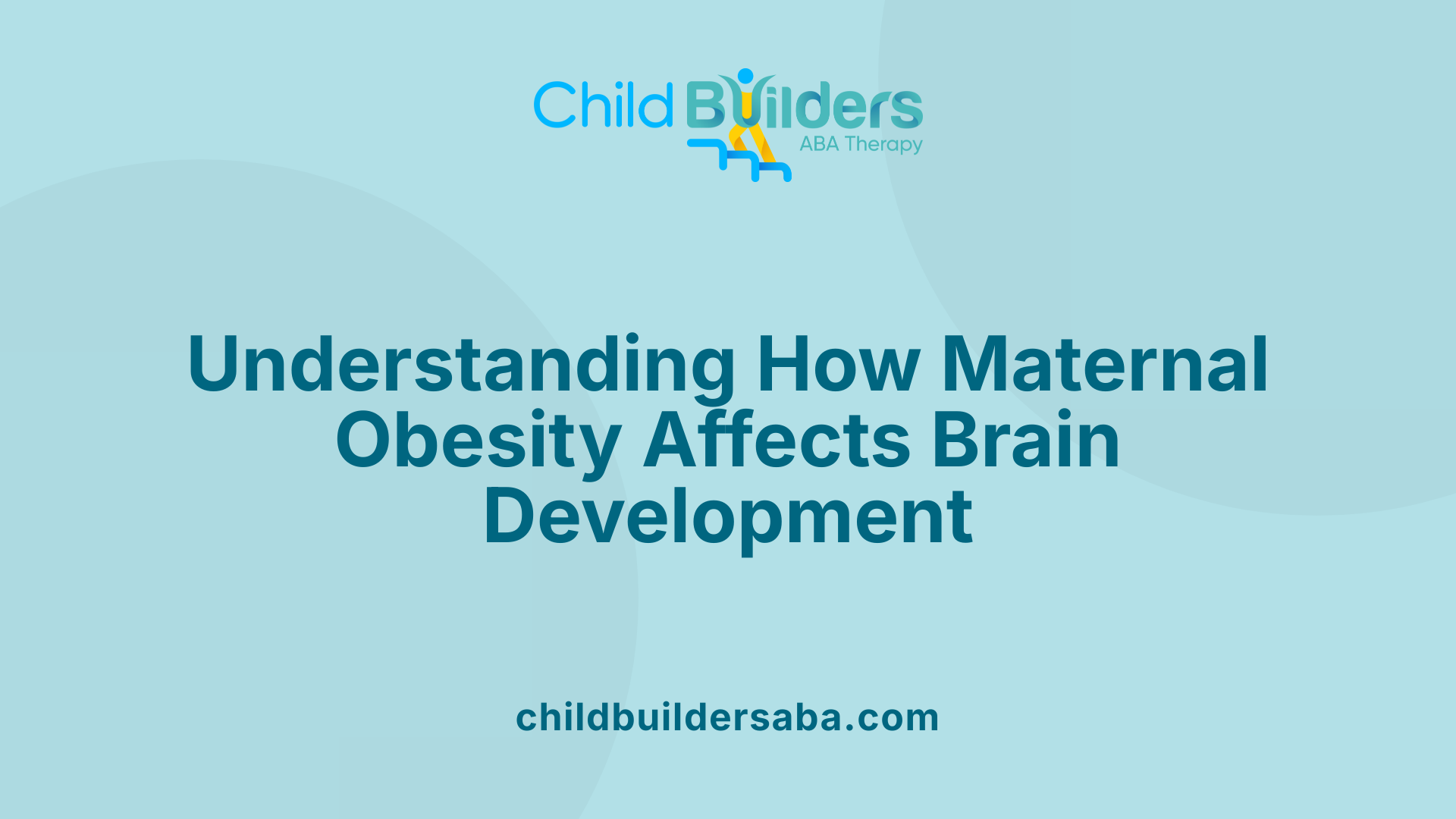
What biological mechanisms link maternal obesity to autism risk?
Research indicates that maternal obesity may contribute to autism spectrum disorder (ASD) in offspring through several complex biological pathways. One primary factor is systemic inflammation. Obese pregnant women often experience heightened levels of inflammatory markers and immune activation, which can influence fetal brain development either through direct effects or via placental transmission. This inflammation can alter neural growth and connectivity, creating a neurodevelopmental pathway toward ASD.
Hormonal imbalances are another crucial aspect. Obesity disrupts normal endocrine functions, leading to altered levels of hormones such as insulin, leptin, and cytokines. These hormones are vital for fetal brain development, and their dysregulation can result in abnormal neural circuitry. For example, gestational diabetes—a common complication of obesity—further intensifies hormonal disturbances, increasing ASD risk.
Metabolic disturbances also play a role. Obesity-related factors like insulin resistance and disrupted lipid metabolism can affect nutrient availability and fetal brain environment. These disturbances may lead to epigenetic modifications—changes in gene expression without altering DNA—that impact neurodevelopmental genes and processes.
Emerging hypotheses point to environmental influences, such as mercury overload. Obese mothers tend to have higher mercury levels, which can transfer across the placenta, potentially affecting fetal neurodevelopment and increasing ASD susceptibility.
The combined effects of inflammation, hormonal imbalance, metabolic disruptions, and environmental exposures create a biologically plausible link between maternal obesity and increased autism risk in children. Addressing these mechanisms could help in developing targeted prevention strategies, emphasizing maternal health optimization before and during pregnancy.
Role of Maternal Diabetes and Comorbid Conditions
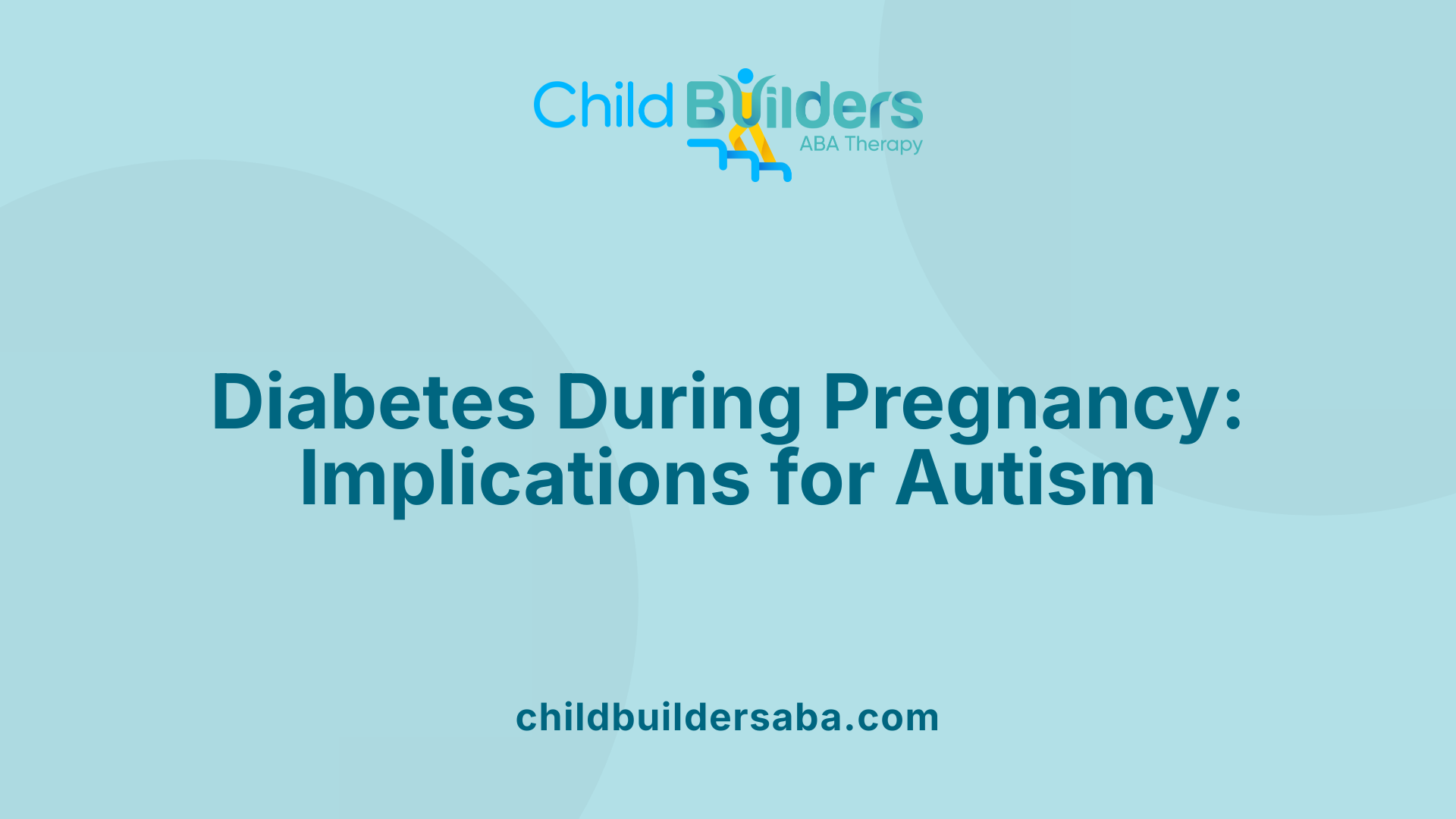
How do maternal health conditions like diabetes relate to autism risk?
Research consistently indicates that maternal health issues, particularly diabetes—including gestational diabetes and pre-existing diabetes—are linked to a heightened possibility of autism spectrum disorder (ASD) in children. Multiple studies and meta-analyses show that children born to mothers with diabetes have a doubled to tripled risk of ASD. For example, in a large U.S. cohort, children of mothers with pre-pregnancy diabetes had a risk more than three times higher than those born to healthy mothers. Similarly, maternal obesity, often concurrent with diabetes, amplifies this risk further.
However, the relationship is complex. Many studies controlling for shared family factors—such as genetics and environment—suggest that these conditions alone may not directly cause ASD. Instead, they might influence risk through common genetic predispositions or environmental exposures that run in families.
Animal models examining the effects of maternal diabetes reveal potential mechanisms like increased oxidative stress and epigenetic modifications that could disrupt fetal brain development. These biological pathways could help explain how maternal diabetes impacts neurodevelopment, potentially leading to ASD-like behaviors.
Additional factors, such as environmental toxin exposure or hormonal imbalances during pregnancy, may interact with genetic risks, further influencing outcomes. Research suggests that systemic inflammation and metabolic disturbances associated with diabetes could interfere with crucial stages of fetal neural development.
While it's clear that maternal conditions like diabetes are associated with increased autism risk, the current understanding underscores the formidable role of genetic and environmental familial influences. These insights point to the importance of managing maternal health during pregnancy but emphasize that the origins of autism are multifaceted, involving a complex interplay between biological, environmental, and genetic factors.
Genetic and Environmental Interactions in Autism Development
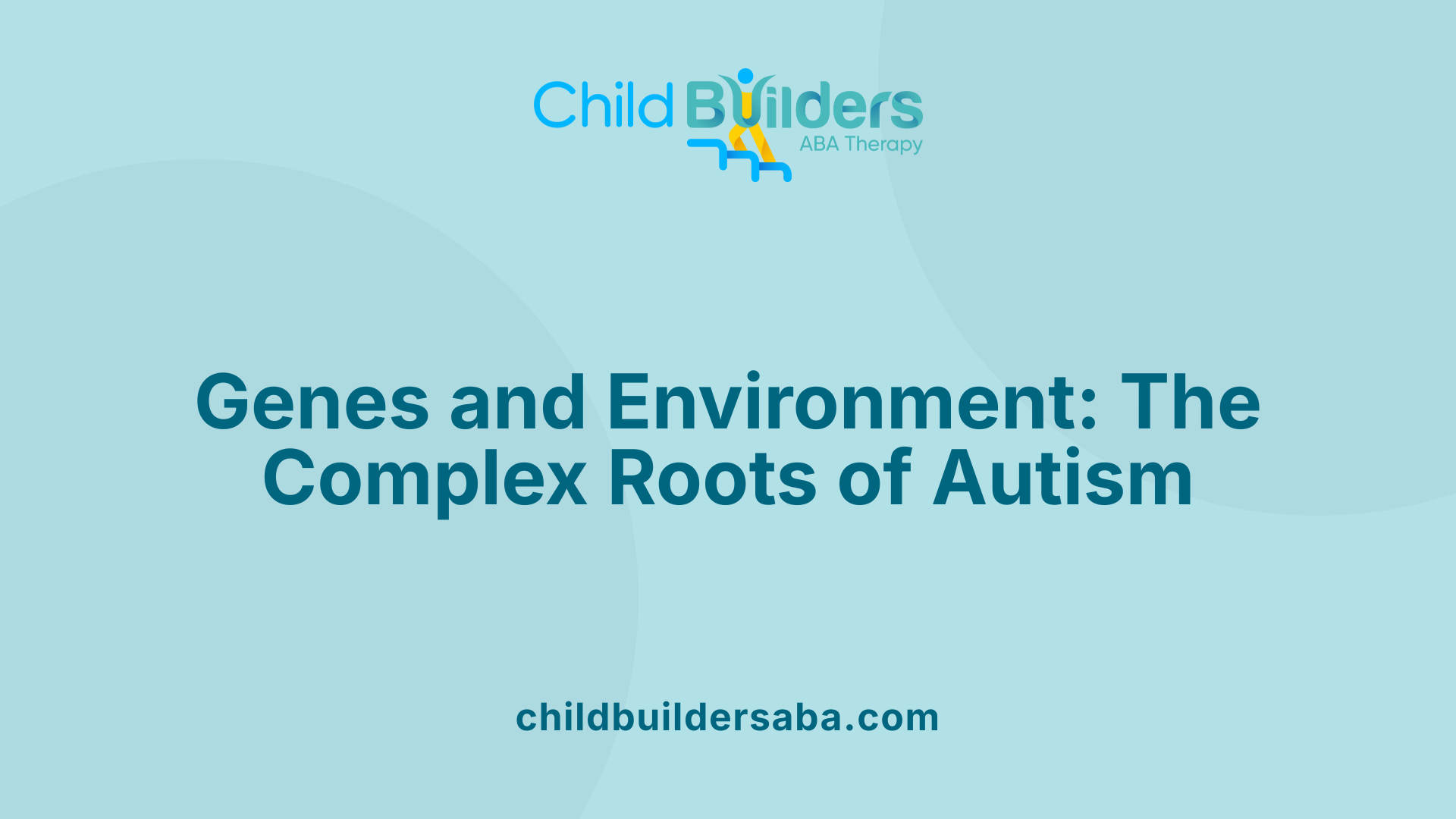
What role do genetic and environmental factors play in autism?
Research shows that nature and nurture both influence the development of autism spectrum disorder (ASD). Genetics are considered the dominant factor, with some estimates indicating that 60 to 90% of autism risk is hereditary. Numerous risk genes have been identified that affect how the brain develops and how neurons communicate, shaping neurodevelopmental outcomes.
However, environmental influences also play a significant role. Factors such as advanced parental age, prenatal exposure to pollutants, maternal health conditions like obesity and diabetes, and complications during birth have all been linked to increased ASD risk. These environmental elements often interact with genetic susceptibility, amplifying the overall risk rather than acting as direct causes.
Emerging research emphasizes the importance of gene-environment interplay. Epigenetic mechanisms, which control how genes are expressed without changing DNA sequences, serve as a key pathway through which environmental factors influence neurodevelopment. For instance, maternal inflammation or toxin exposure during pregnancy can modify gene expression patterns, potentially disrupting typical brain development.
Importantly, extensive scientific reviews have debunked myths linking vaccines to autism, reiterating that vaccines are not a cause. Instead, the current understanding highlights a complex web of interactions between inherited genetic predispositions and environmental exposures.
In conclusion, autism arises from intricate gene-environment interactions. Both inherited risk genes and external influences jointly shape early brain development, and understanding these interactions is vital for prevention and intervention.
| Aspect | Details | Additional Information |
|---|---|---|
| Heritability Estimates | 60-90% of autism risk is inherited | Based on family and twin studies; high genetic influence |
| Influence of Environment | Factors like maternal obesity, pollutants, and birth complications | Typically act alongside genetic factors |
| Family and Sibling Studies | Similar autism rates within families suggest genetic components | Siblings often share genetic and environmental backgrounds |
| Gene-Environment Models | Epigenetic mechanisms mediate environmental impact on gene expression | Critical for understanding how risks combine in development |
Understanding the delicate balance between genetic predispositions and environmental factors is crucial in addressing autism spectrum disorder. This integrated view helps guide future research and public health strategies.
Implications, Preventive Strategies, and Future Directions
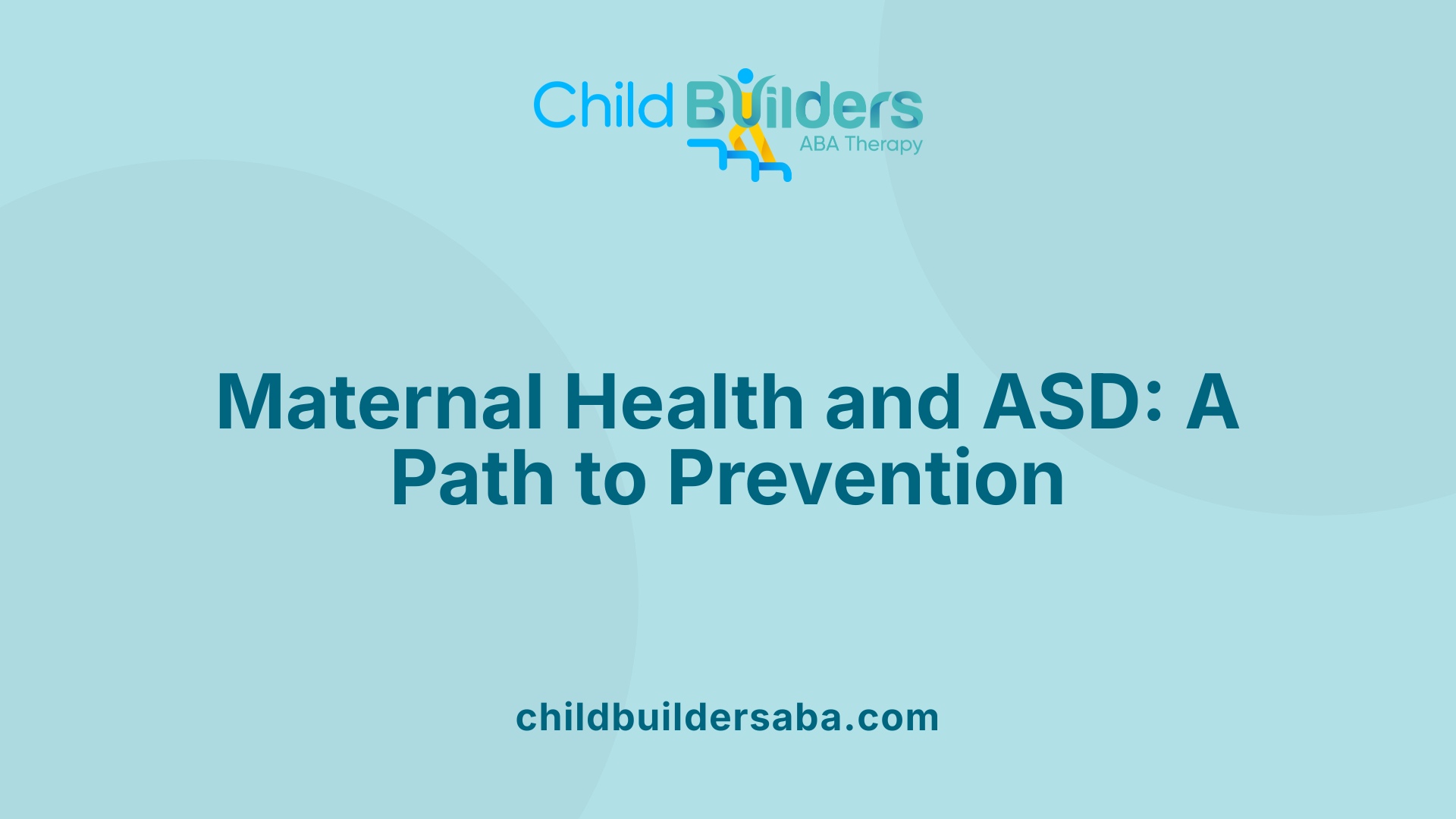
Why is maternal weight management important?
Research consistently shows that maternal health before and during pregnancy influences the neurodevelopment of the fetus. Specifically, maternal obesity and diabetes are linked with a higher risk of autism spectrum disorder (ASD) in children. To mitigate these risks, promoting healthy weight and metabolic health among women of reproductive age is essential. Healthy lifestyle choices, including balanced diet and physical activity, can help prevent obesity and manage existing metabolic conditions, ultimately reducing systemic inflammation and hormonal disturbances that might affect fetal brain development.
Potential approaches to reduce autism risk
Targeted public health strategies play a key role in risk reduction. Preconception counseling, routine health screenings, and education about the importance of healthy weight and diabetes control are crucial. During pregnancy, interventions such as nutritional support, managing inflammation, and possibly incorporating antioxidants or anti-inflammatory medications might provide additional benefits. Emerging research suggests that these approaches could influence inflammation levels and hormonal balance, which are factors implicated in neurodevelopmental outcomes.
Future research directions involving mercury and inflammation
One area of ongoing investigation involves the possible role of mercury exposure. Maternal obesity is associated with increased mercury levels, which may transfer to the fetus and contribute to ASD development. Confirming this hypothesis could lead to new preventive measures, such as the use of mercury chelators or antioxidants during pregnancy. Additionally, further studies on maternal immune activation and inflammation are needed to deepen understanding of their contributions to autism risk. Such research could pave the way for targeted therapies that modulate immune responses or reduce oxidative stress.
Public health implications and the way forward
Considering the rising global rates of obesity and neurodiverse conditions, integrating maternal health improvements into public health policies is vital. Educating women on the importance of healthy weight and metabolic management before conception can decrease the occurrence of ASD and related disorders. Moreover, fostering environments that support active lifestyles and good nutrition can have broader societal benefits. Continued research, especially longitudinal and familial studies, will be essential to clarify causative mechanisms and optimize prevention strategies, ultimately aiming to improve neurodevelopmental outcomes for future generations.
Moving Toward Preventative Care and Policy Change
The accumulated scientific evidence highlights the critical role maternal health plays in offspring neurodevelopment, particularly regarding obesity and metabolic conditions like diabetes. As research continues to deepen our understanding of biological mechanisms, genetic and environmental influences, and potential risk modifiers, it becomes increasingly clear that preventive strategies emphasizing maternal health optimization can substantially reduce autism prevalence. Public health policies promoting healthy pregnancies, early intervention programs, and continued research into environmental toxin mitigation and epigenetic therapies are essential. Addressing maternal obesity not only benefits individual families but also has profound implications for societal health, potentially curbing the rising tide of neurodevelopmental disorders in future generations.
References
- The Association of Maternal Obesity and Diabetes With Autism and ...
- Obesity, Diabetes in Mom Increases Risk of Autism in Child
- Asthma, obesity during pregnancy linked to autism in children
- Obesity in mums doubles the risk of autism in babies
- Parental Obesity and Risk of Autism Spectrum Disorder - PMC
- Giant study questions link between autism and maternal health
- Maternal Body Mass Index and Risk of Autism Spectrum Disorders ...
- Mercury as a possible link between maternal obesity and autism ...
- Maternal Obesity and Autism: Understand The Link - Astra ABA
- Maternal Obesity, Diabetes Tied to Increased Autism Risk in Kids





.jpg)































































































